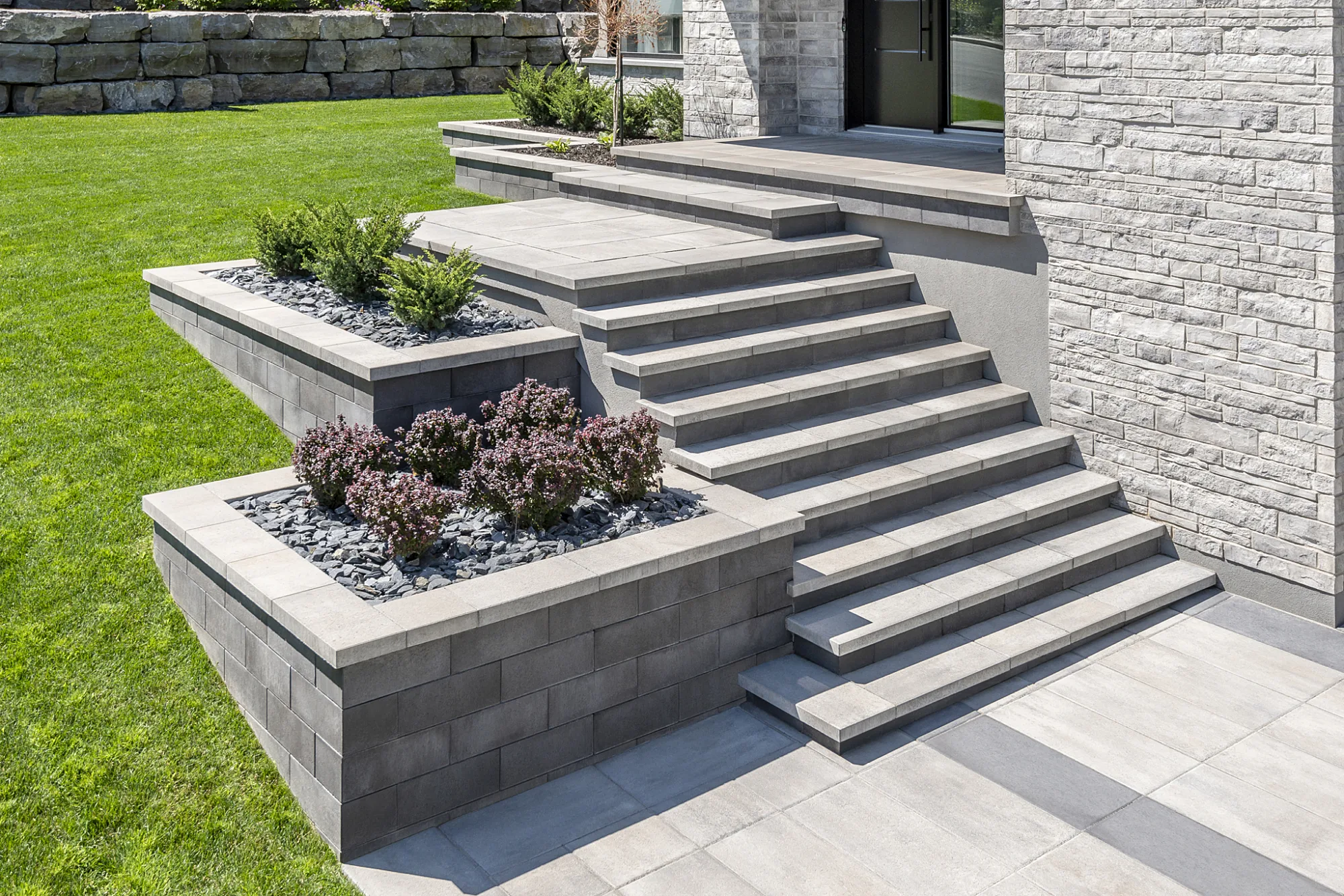Retaining walls are more than just a way to hold soil in place. With the right design, they can also add beauty and functionality to your outdoor living space. One of the best ways to make them practical is by including steps or stairs. Retaining walls with steps not only improve accessibility but also create a natural flow between different levels of your yard. Whether you want a simple garden path or a dramatic entryway, there are many ways to combine retaining walls with stairs to match your home and landscape.
In this blog, we’ll explore the most popular retaining wall step ideas, discuss materials like concrete landscape blocks, and share tips for building retaining walls with steps that last for years.
1. Straightforward Garden Steps with Retaining Walls
One of the simplest and most popular approaches is to add straight steps alongside retaining walls. These steps are ideal for gardens, walkways, and sloped yards where homeowners want easy access without too much complexity. Using landscape block steps ensures durability and a clean look that blends with the wall.
When planning these stairs, consider matching the block color and texture with your retaining walls for a unified design. If you want a softer touch, surround the steps with plants or small shrubs to create a natural transition. Straight steps are timeless, cost-effective, and practical for almost any outdoor space.
Explore high-quality retaining walls to find the right look for your project.
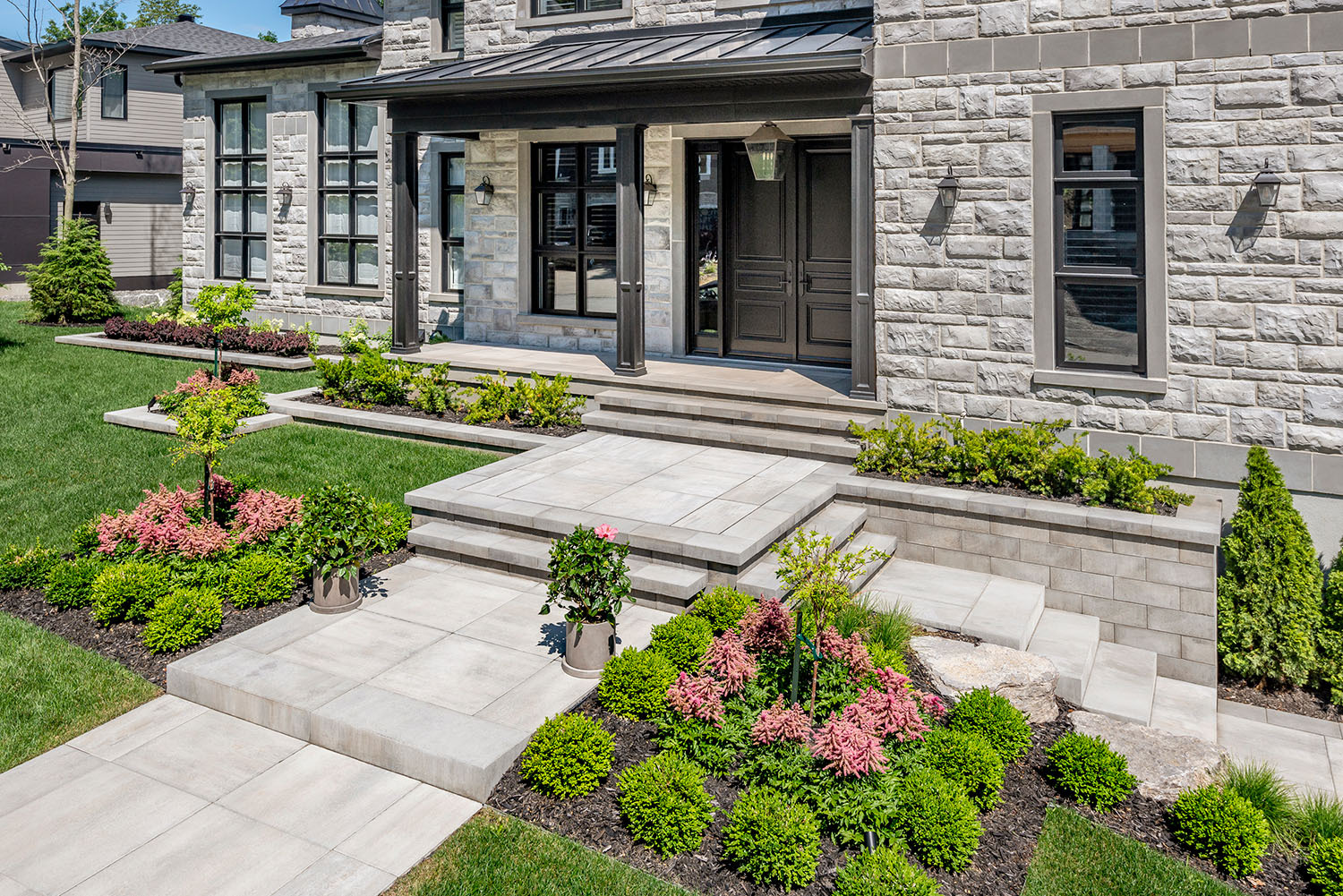
2. Curved Retaining Wall Stairs
Curved retaining wall stairs add character and a sense of flow to any landscape. Instead of sharp, straight lines, these steps follow the natural slope of the yard, giving the space a more inviting feel. A concrete retaining wall with stairs in a gentle curve works especially well for front yard entryways or around patios.
The main advantage of curved steps for retaining walls is how they soften the overall design. They make the transition between levels feel more natural and can be paired with rounded garden beds or walkways. While they may require more planning and precise cutting of blocks, the result is often worth the effort.
3. Wide Entry Steps with Retaining Walls
For homes with elevated entrances or backyard patios, wide retaining wall steps create a bold statement. These stairs are usually broader than standard pathways, offering enough room for seating, decor, or planters along the sides. Homeowners often choose retaining walls with steps that are two to three times wider than normal to give a grand appearance.
Wide entry steps are practical too, making it easier for multiple people to walk together. Adding outdoor lighting to each step can make the entryway safer and more welcoming in the evenings.
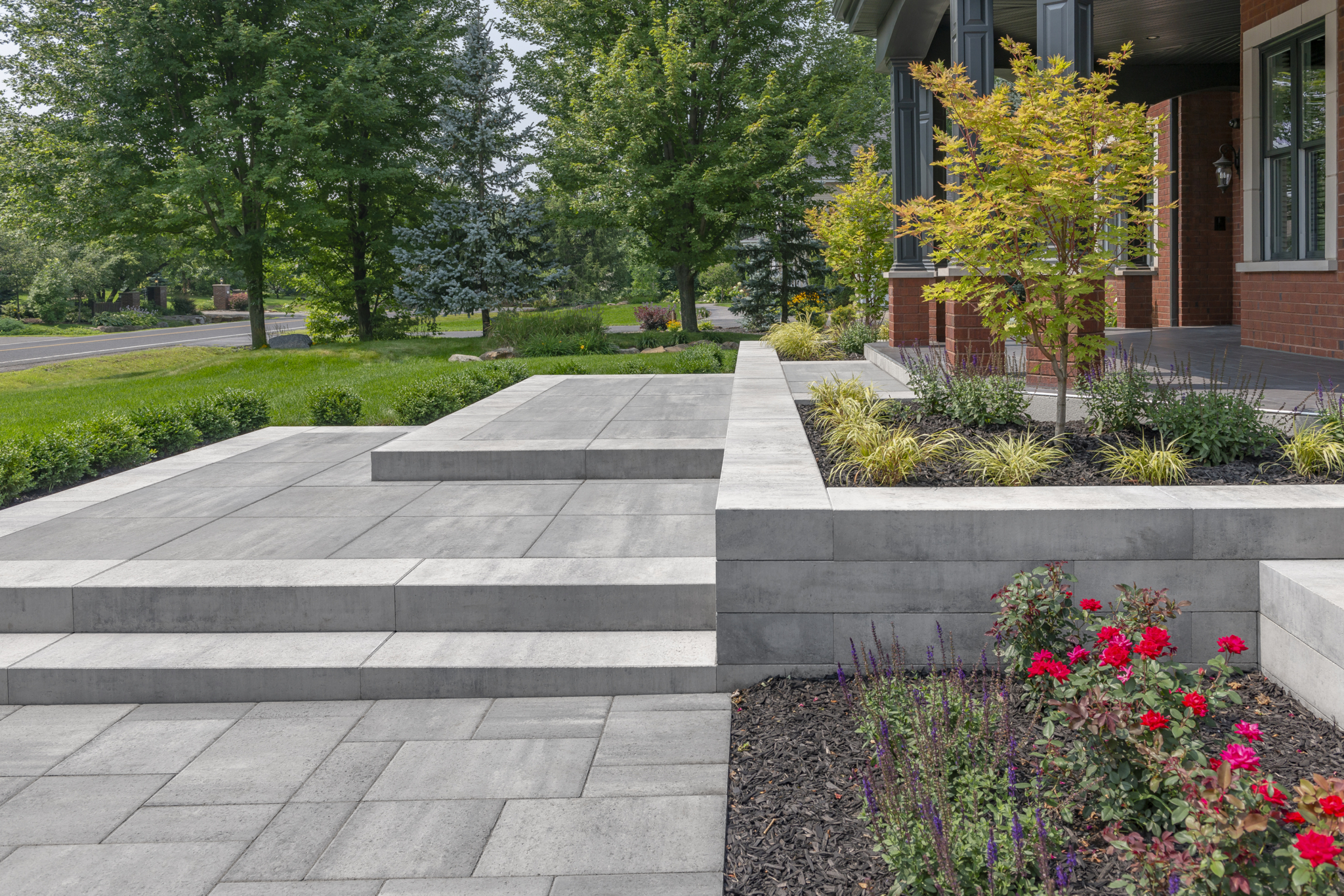
4. Tiered Retaining Wall with Stairs
Tiered retaining walls work perfectly in sloped backyards. By breaking the slope into multiple levels, you can create garden beds, play areas, or seating spaces, all connected by steps. Adding stairs to each level of the retaining wall not only improves movement across the yard but also ties the different areas together.
Steps for retaining walls in tiered designs often use matching blocks for consistency. However, some homeowners prefer contrasting colors for the steps to make them stand out visually. This design is especially practical for large backyards where space can be divided into functional zones.
See durable landscape steps that pair well with tiered retaining walls.
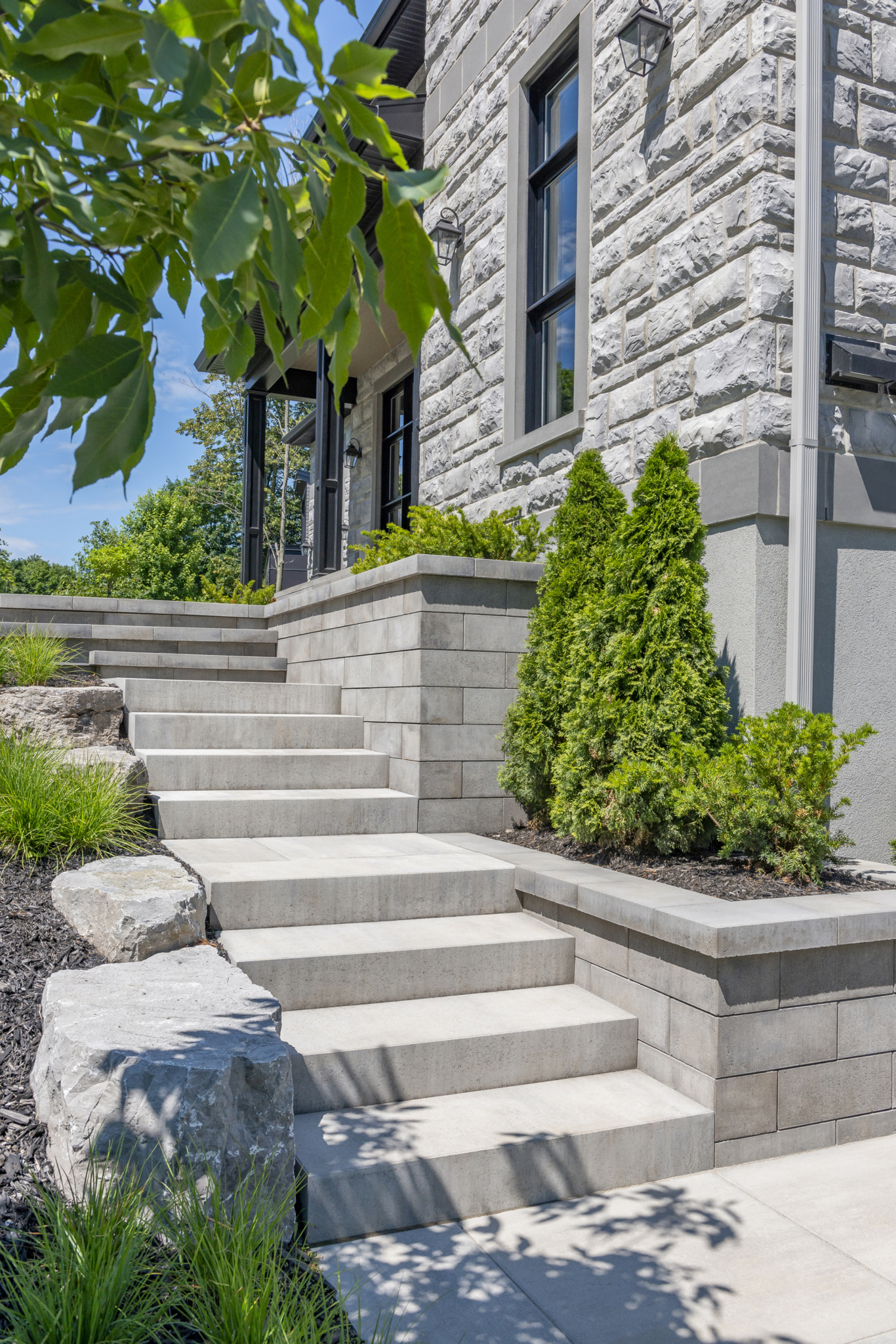
5. Modern Rectangle Smooth Steps
Modern rectangle smooth steps are a popular choice for homeowners who prefer a clean and straightforward design. These rectangle landscape block steps work well with retaining walls, giving the yard a neat and uniform look. Because of their simple lines and smooth surface, they’re easy to maintain and fit nicely with both front entrances and backyard patios.
Pairing these steps with retaining walls creates a practical layout that feels organized and long-lasting. Homeowners often choose this option when they want steps that look modern without being overly complicated.
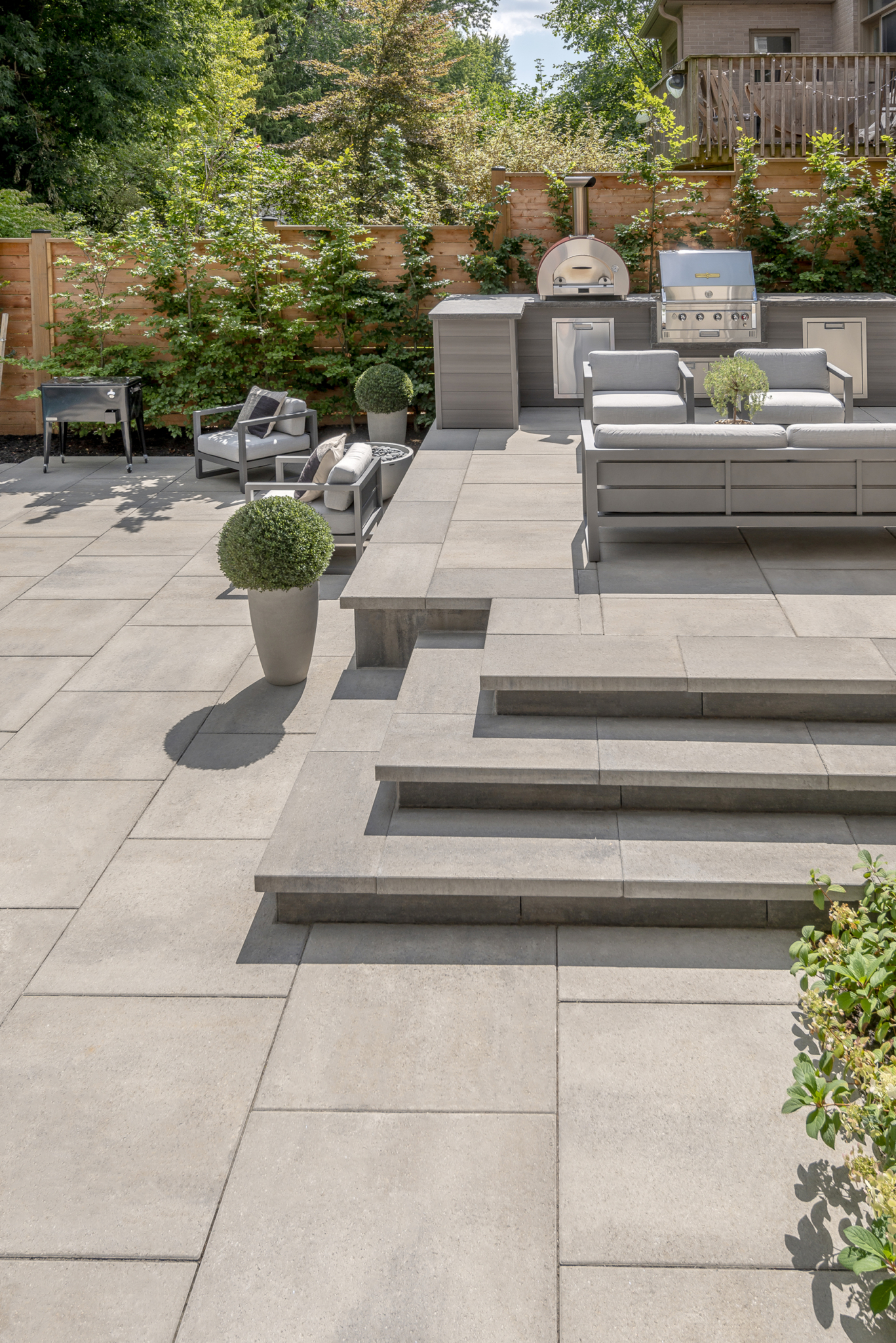
6. Stairs Integrated into Patios and Outdoor Living Spaces
Another great idea is to integrate stairs into retaining walls that connect patios, decks, or outdoor kitchens. A concrete retaining wall with stairs leading directly to a seating or dining area makes the yard more functional while also creating a focal point.
Homeowners often choose modern, smooth-faced blocks for these projects to keep the design contemporary. Adding planters along the steps or built-in lighting improves both style and usability. These integrated stairs are practical for backyards with multiple activity zones.
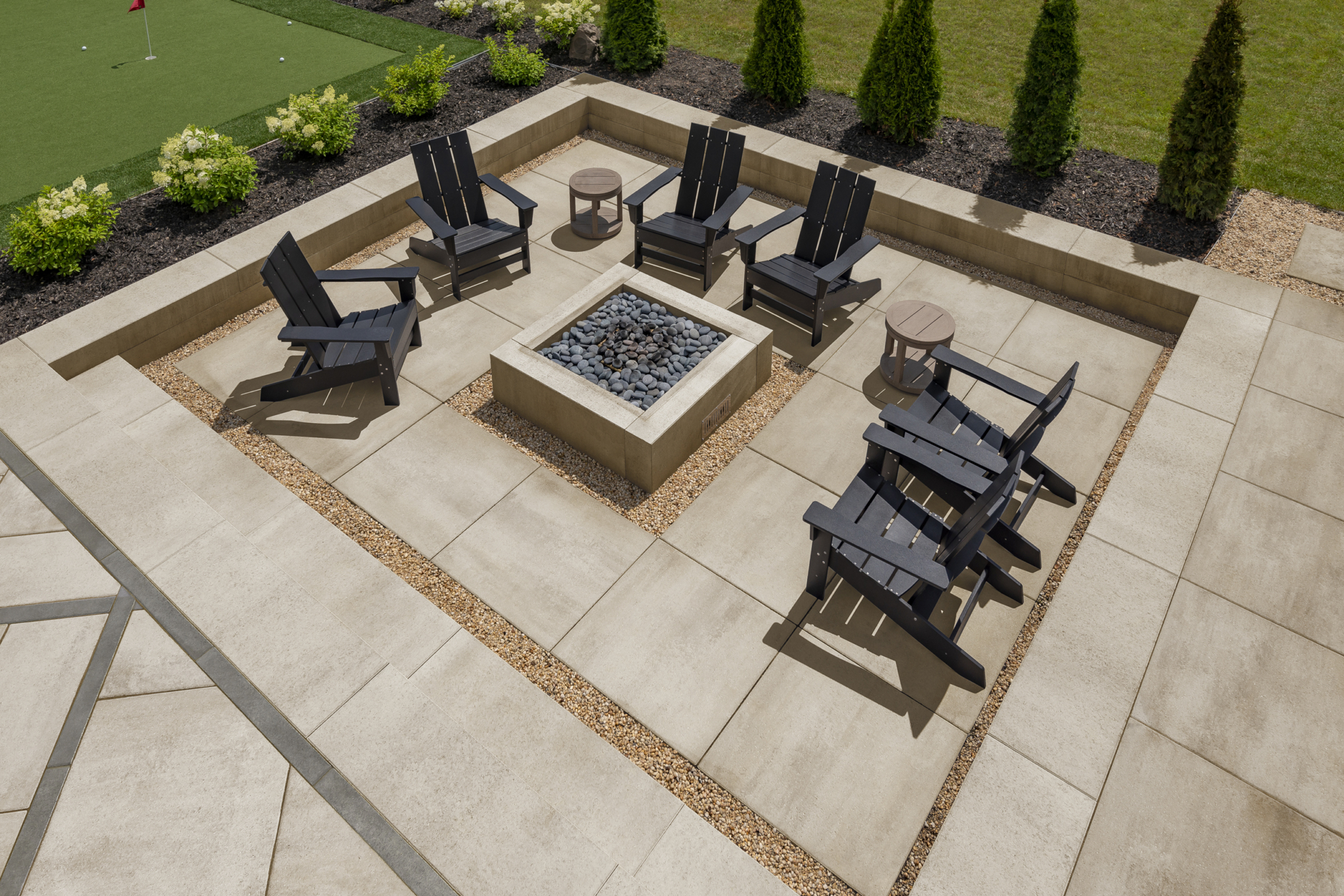
7. Multi-Directional Retaining Wall Stairs
Not every set of stairs has to go in a straight line. Multi-directional retaining wall steps turn corners or split into two directions, making them useful for complex landscapes. For example, stairs may start at the driveway and split halfway, leading both to the front door and the side yard.
These retaining walls with stairs work best with carefully planned layouts. They maximize space efficiency and provide flexibility in how different areas of the property are accessed.
Tips for Adding Stairs to Retaining Walls
When planning to add steps for retaining walls, keep these practical tips in mind:
- Plan the rise and run: Ensure the height (rise) and depth (run) of each step follow standard building codes for comfort and safety.
- Choose durable materials: Concrete landscape blocks are a reliable choice because they resist shifting and weather damage.
- Blend the design: Match your house siding, patio, or retaining walls to keep the outdoor space visually connected.
- Think about drainage: Water should not pool on or behind the steps, so include proper drainage in your design.
- Add safety features: Lighting, textured surfaces, and handrails may be necessary depending on the location of your stairs.
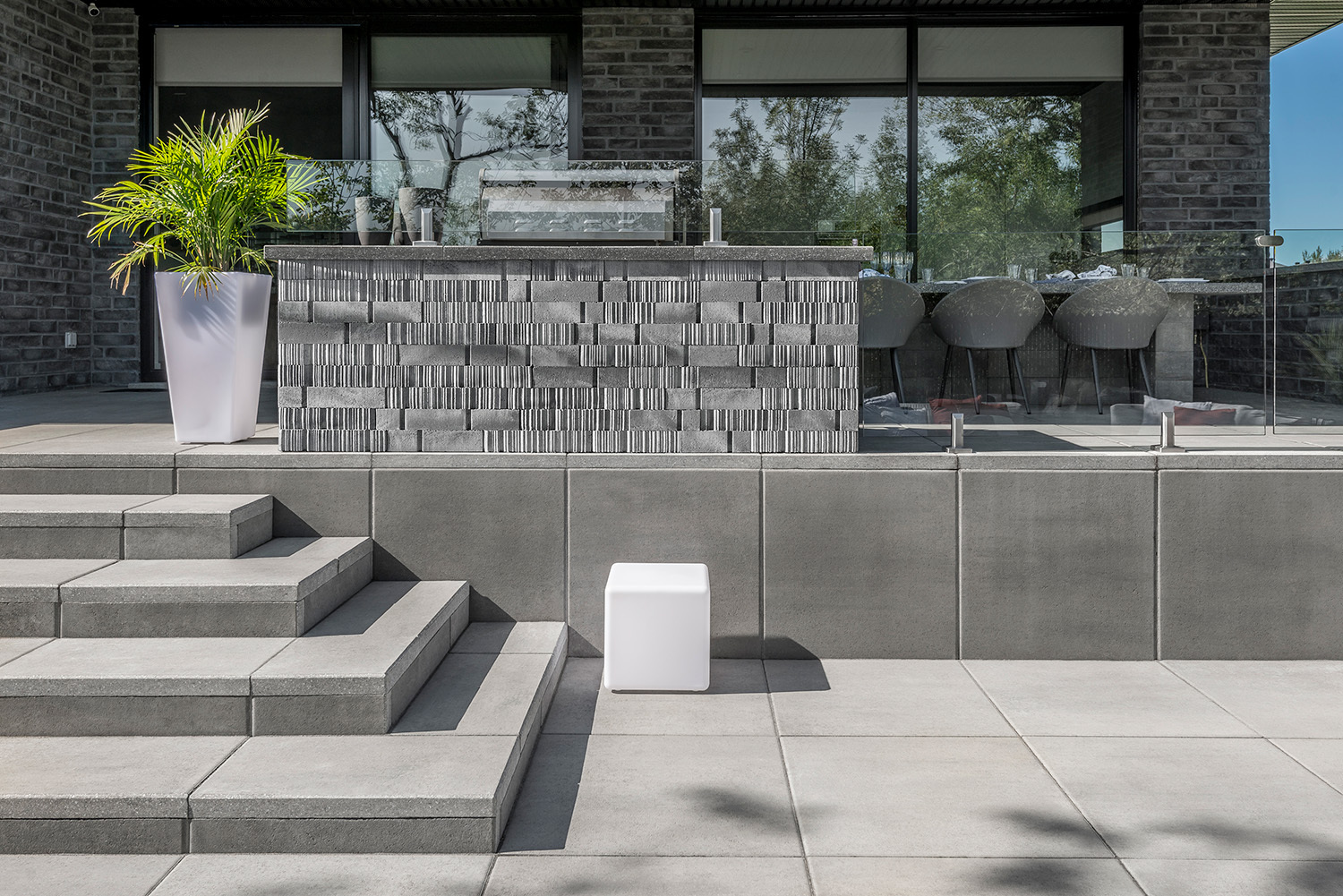
Building Retaining Walls with Steps: What to Know
If you’re planning to start fresh, here are some important things to understand about building retaining walls with steps:
- Start with a solid base: Both the wall and steps need a level, compacted foundation to prevent shifting over time.
- Lay blocks carefully: For consistent results, use quality landscape block steps that interlock and align easily.
- Check for stability: Walls with stairs must support additional pressure, so reinforcing with proper drainage and backfill is critical.
- Use professional help if needed: DIY projects are possible, but large or tall retaining walls often require expert installation.
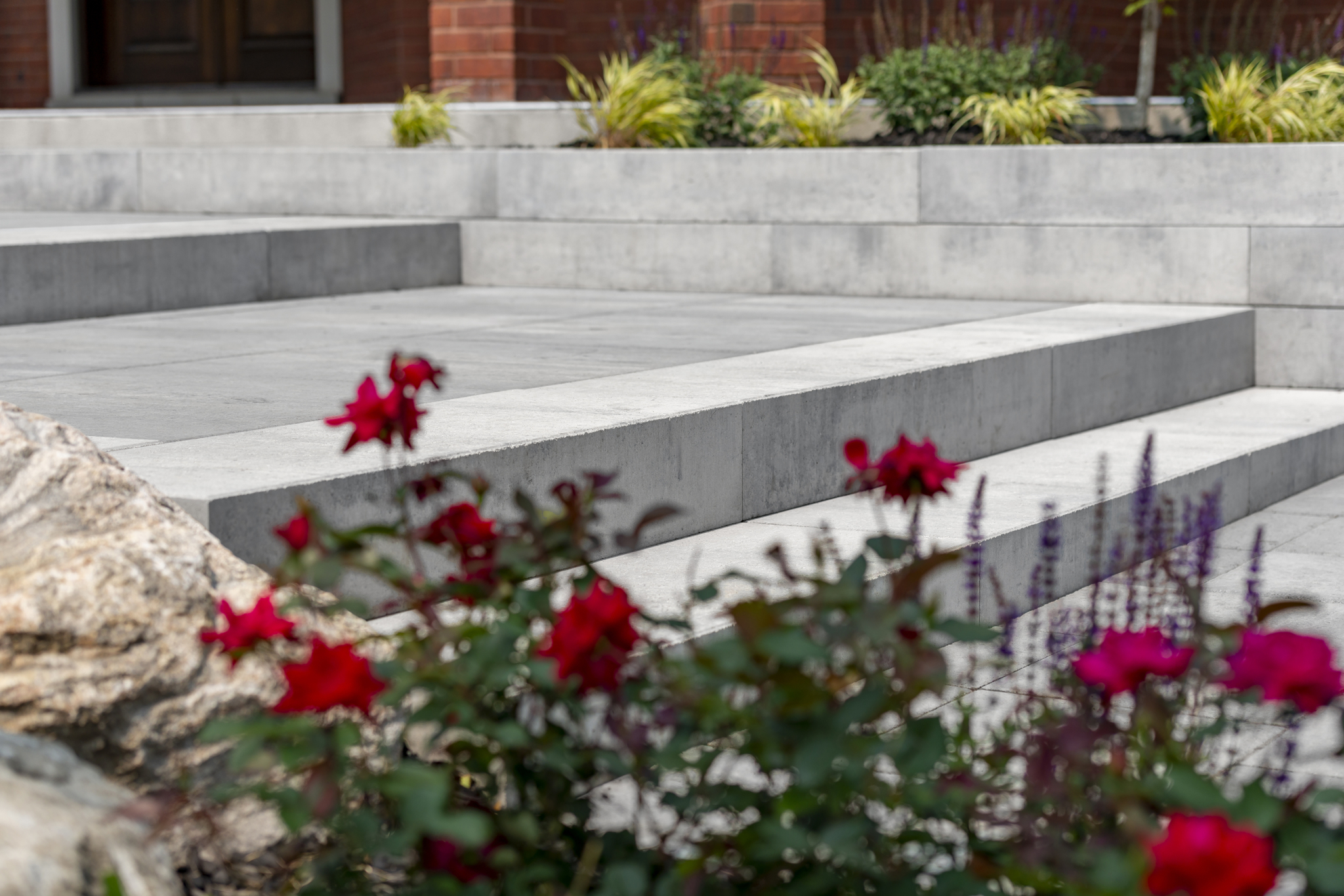
By planning carefully and using durable products, you can build retaining walls with steps that not only solve functional challenges but also improve the look of your outdoor living space.
Browse retaining walls and steps from Rinox to get started on your project.

